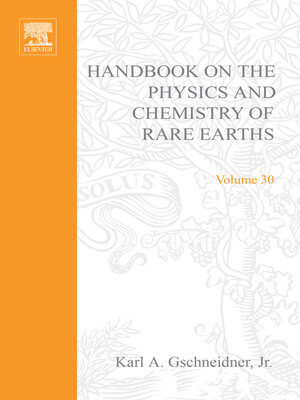Handbook on the Physics and Chemistry of Rare Earths
ebook ∣ High Temperature Rare Earths Superconductors--I · Handbook on the Physics and Chemistry of Rare Earths
By K.A. Gschneidner

Sign up to save your library
With an OverDrive account, you can save your favorite libraries for at-a-glance information about availability. Find out more about OverDrive accounts.
Find this title in Libby, the library reading app by OverDrive.



Search for a digital library with this title
Title found at these libraries:
| Library Name | Distance |
|---|---|
| Loading... |
This volume of the Handbook is the first of a two-volume set of reviews devoted to the rare-earth-based high-temperature oxide superconductors (commonly known as hiTC superconductors). The history of hiTC superconductors is a few months short of being 14 years old when Bednorz and Müller published their results which showed that (La,BA)2CuO4 had a superconducting transition of ~30 K, which was about 7K higher than any other known superconducting material. Within a year the upper temperature limit was raised to nearly 100K with the discovery of an ~90K superconducting transition in YBa2Cu3O7-&dgr;. The announcement of a superconductor with a transition temperature higher than the boiling point of liquid nitrogen set-off a frenzy of research on trying to find other oxide hiTC superconductors. Within a few months the maximum superconducting transition reached 110 K (Bi2Sr2Ca2Cu3010, and then 122K (TlBa2Ca3Cu4O11. It took several years to push TC up another 11 K to 133 K with the discovery of superconductivity in HgBa2Ca2Cu3O8, which is still the record holder today.







